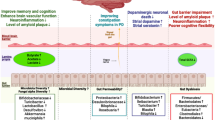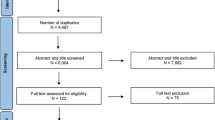Abstract
There is growing support that environmental influences and individual genetic susceptibility may increase the incidence and accelerate the onset of Alzheimer’s disease (AD). Epigenetic mechanisms encompass a complex regulatory network of modifications with considerable impact on health and disease risk. Abnormal epigenetic regulation is a hallmark in many pathological conditions including AD. It is well recognized that numerous bioactive dietary components mediate epigenetic modifications associated with the pathophysiology of several diseases. Although the influences of dietary factors on epigenetic regulation have been extensively investigated, only few studies have explored the effects of specific food components in regulating epigenetic patterns during neurodegeneration and AD. Epigenetic nutritional research has substantial potential for AD and may represent a window of opportunity to complement other interventions. Here, we provide a brief overview of the main mechanisms involved in AD, some of which may be epigenetically modulated by bioactive food.
Similar content being viewed by others
References
Mattson MP. Pathways towards and away from Alzheimer’s disease. Nature 2004;430(7000):631–639.
Bihaqi SW, Schumacher A, Maloney B, et al. Do epigenetic pathways initiate late onset Alzheimer disease (LOAD): towards a new paradigm. Curr Alzheimer Res 2012;9(5):574–588.
Adwan L, Zawia NH. Epigenetics: a novel therapeutic approach for the treatment of Alzheimer’s disease. Pharmacol Ther 2013;139(l):41–50.
Feil R, Fraga MF. Epigenetics and the environment: emerging patterns and implications. Nat Rev Genet 2012;13(2):97–109.
Choi SW, Friso S. Epigenetics: A New Bridge between Nutrition and Health. Adv Nutr 2010;1(1):8–16.
Jiménez-Chillarón JC, Díaz R, Martínez D, et al. The role of nutrition on epigenetic modifications and their implications on health. Biochimie. 2012;94(11):2242–2263.
Ramesh BN, Rao TS, Prakasam A, et al. Neuronutrition and Alzheimer’s disease. J Alzheimers Dis 2010;19(4):1123–1139.
Davinelli S, Sapere N, Zella D, et al. Pleiotropic protective effects of phytochemicals in Alzheimer’s disease. Oxid Med Cell Longev 2012:386527.
Gómez-Pinilla F. Brain foods: the effects of nutrients on brain function. Nat Rev Neurosci 2008;9(7):568–578.
Malireddy S, Kotha SR, Secor JD, et al. Phytochemical antioxidants modulate mammalian cellular epigenome: implications in health and disease. Antioxid Redox Signal 2012;17(2):327–339.
Bradley-Whitman MA, Lovell MA. Epigenetic changes in the progression of Alzheimer’s disease. Mech Ageing Dev 2013;134(10):486–495.
Mastroeni D, Grover A, Delvaux E, et al. Epigenetic mechanisms in Alzheimer’s disease. Neurobiol Aging 2011;32(7):1161–1180.
Tchantchou F, Graves M, Ortiz D, et al. S-adenosyl methionine: A connection between nutritional and genetic risk factors for neurodegeneration in Alzheimer’s disease. J Nutr Health Aging 2006;10(6):541–544.
Guo JU, Ma DK, Mo H, et al. Neuronal activity modifies the DNA methylation landscape in the adult brain. Nat Neurosci 2011;14(10):1345–1351.
Pogribny IP, Beland FA. DNA hypomethylation in the origin and pathogenesis of human diseases. Cell Mol Life Sci 2009;66(14):2249–2261.
West RL, Lee JM, Maroun LE. Hypomethylation of the amyloid precursor protein gene in the brain of an Alzheimer’s disease patient. J Mol Neurosci 1995;6(2):141–146.
Mulder C, Schoonenboom NS, Jansen EE, et al. The transmethylation cycle in the brain of Alzheimer patients. Neurosci Lett 2005;386(2):69–71.
Bakulski KM, Dolinoy DC, Sartor MA, et al. Genome-wide DNA methylation differences between late-onset Alzheimer’s disease and cognitively normal controls in human frontal cortex. J Alzheimers Dis 2012;29(3):571–588.
Wang SC, Oelze B, Schumacher A. Age-specific epigenetic drift in late-onset Alzheimer’s disease. PLoS One 2008;3(7):e2698.
Corder EH, Saunders AM, Strittmatter WJ, et al. Gene dose of apolipoprotein E type 4 allele and the risk of Alzheimer’s disease in late onset families. Science 1993;261(5123):921–923.
Coppieters N, Dieriks BV, Lill C, et al. Global changes in DNA methylation and hydroxymethylation in Alzheimer’s disease human brain. Neurobiol Aging pii:S 0197–2013;4580(13)00615-5.
Mill J. Toward an integrated genetic and epigenetic approach to Alzheimer’s disease. Neurobiol Aging 2011;32(7): 1188–1191.
Coppedè F. One-carbon metabolism and Alzheimer’s disease: focus on epigenetics. Curr Genomics 2010;ll(4):246–260.
Fuso A, Seminara L, Cavallaro RA, et al. S-adenosylmethionine/homocysteine cycle alterations modify DNA methylation status with consequent deregulation of PS1 and BACE and beta-amyloid production. Mol Cell Neurosci 2005;28(l):195–204.
Bacalini MG, Friso S, Olivieri F, et al. Present and future of anti-ageing epigenetic diets. Mech Ageing Dev pii:S 2014; 0047-6374(13)00136-X.
Liu Z, Xie Z, Jones W, et al. Curcumin is a potent DNA hypomethylation agent. Bioorg Med Chem Lett 2009;19(3):706–709.
Mastroeni D, Grover A, Delvaux E, et al. Epigenetic changes in Alzheimer’s disease: decrements in DNA methylation. Neurobiol Aging 2010;31(12):2025–2037.
Ray D, Wu A, Wilkinson JE, et al. Aging in heterozygous Dnmt1-deficient mice: effects on survival, the DNA methylation genes, and the development of amyloidosis. J Gerontol A Biol Sci Med Sci 2006;61(2):115–124.
Levenson JM, Roth TL, Lubin FD, et al. Evidence that DNA (cytosine-5) methyltransferase regulates synaptic plasticity in the hippocampus. J Biol Chem 2006;281(23):15763–15773.
Rao JS, Keleshian VL, Klein S, Rapoport SI. Epigenetic modifications in frontal cortex from Alzheimer’s disease and bipolar disorder patients. Transl Psychiatry 2012;2:el32.
Fang MZ, Wang Y, Ai N, et al. Tea polyphenol (−)-epigallocatechin-3-gallate inhibits DNA methyltransferase and reactivates methylation-silenced genes in cancer cell lines. Cancer Res 2003;63(22):7563–7570.
Lee WJ, Zhu BT. Inhibition of DNA methylation by caffeic acid and chlorogenic acid, two common catechol-containing coffee polyphenols. Carcinogenesis 2006;27(2):269–277.
Majid S, Dar AA, Shahryari V, et al. Genistein reverses hypermethylation and induces active histone modifications in tumor suppressor gene B-Cell translocation gene 3 in prostate cancer. Cancer 2010;116(l):66–76.
Fang MZ, Chen D, Sun Y, et al. Reversal of hypermethylation and reactivation of p16INK4a, RARbeta, and MGMT genes by genistein and other isoflavones from soy. Clin Cancer Res 2010;11(19 Pt 1):7033–7041.
Wang LG, Beklemisheva A, Liu XM, et al. Dual action on promoter demethylation and chromatin by an isothiocyanate restored GSTP1 silenced in prostate cancer. Mol Carcinog. 2007;46(1):24–31.
Park LK, Friso S, Choi SW. Nutritional influences on epigenetics and age-related disease. Proc Nutr Soc 2012;71(l):75–83.
Stilling RM, Fischer A. The role of histone acetylation in age-associated memory impairment and Alzheimer’s disease. Neurobiol Learn Mem 2011;96(l):19–26.
Peleg S, Sananbenesi F, Zovoilis A, et al. Altered histone acetylation is associated with age-dependent memory impairment in mice. Science 2010;328(5979):753–756.
Kilgore M, Miller CA, Fass DM, et al. Inhibitors of class 1 histone deacetylases reverse contextual memory deficits in a mouse model of Alzheimer’s disease. Neuropsychopharmacology 2010;35(4):870–880.
Ricobaraza A, Cuadrado-Tejedor M, Pérez-Mediavilla A, et al. Phenylbutyrate ameliorates cognitive deficit and reduces tau pathology in an Alzheimer’s disease mouse model. Neuropsychopharmacology 2009;34(7):1721–1732.
Ding H, Dolan PJ, Johnson GV. Histone deacetylase 6 interacts with the microtubule-associated protein tau. J Neurochem 2008;106(5):2119–2130.
Gräff J, Rei D, Guan JS, et al. An epigenetic blockade of cognitive functions in the neurodegenerating brain. Nature 2012;483(7388):222–226.
Kim MJ, Seong AR, Yoo JY, et al. Gallic acid, a histone acetyltransferase inhibitor, suppresses β-amyloid neurotoxicity by inhibiting microglial-mediated neuroinflammation. Mol Nutr Food Res 2011;55(12):1798–1808.
Shankar S, Kumar D, Srivastava RK. Epigenetic modifications by dietary phytochemicals: implications for personalized nutrition. Pharmacol Ther 2013;138(1):1–17.
Govindarajan N, Agis-Balboa RC, Walter J, et al. Sodium butyrate improves memory function in an Alzheimer’s disease mouse model when administered at an advanced stage of disease progression. J Alzheimers Dis 2011;26(1):187–197.
Dash PK, Orsi SA, Moore AN, et al. Histone deactylase inhibition combined with behavioral therapy enhances learning and memory following traumatic brain injury. Neuroscience 2009;163(1):1–8.
Donmez G, Wang D, Cohen DE, Guarente L. SIRT1 suppresses beta-amyloid production by activating the alpha-secretase gene ADAM10. Cell 2010;142(2):320–332.
Longpré F, Garneau P, Christen Y, Ramassamy C. Protection by EGb 761 against beta-amyloid-induced neurotoxicity: involvement of NF-kappaB, SIRT1, and MAPKs pathways and inhibition of amyloid fibril formation. Free Radic Biol Med 2006;41(12):1781–1794.
Yokozawa T, Lee YA, Cho EJ, et al. Anti-aging effects of oligomeric proanthocyanidins isolated from persimmon fruits. Drug Discov Ther 2011;5(3):109–118.
Peterson DW, George RC, Scaramozzino F. Cinnamon extract inhibits tau aggregation associated with Alzheimer’s disease in vitro. J Alzheimers Dis 2009;17(3):585–597.
Vepsäläinen S, Koivisto H, Pekkarinen E, et al. Anthocyanin-enriched bilberry and blackcurrant extracts modulate amyloid precursor protein processing and alleviate behavioral abnormalities in the APP/PS1 mouse model of Alzheimer’s disease. J Nutr Biochem 2013;24(l):360–370.
Lagouge M, Argmann C, Gerhart-Hines Z, et al. Resveratrol improves mitochondrial function and protects against metabolic disease by activating SIRT1 and PGC-1alpha. Cell 2006;127(6):1109–1122.
Karuppagounder SS, Pinto JT, Xu H, et al. Dietary supplementation with resveratrol reduces plaque pathology in a transgenic model of Alzheimer’s disease. Neurochem Int 2009;54(2):111–118.
Porquet D, Casadesús G, Bayod S, et al. Dietary resveratrol prevents Alzheimer’s markers and increases life span in SAMP8. Age (Dordr) 2013;35(5):1851–1865.
Davis JM, Murphy EA, Carmichael MD, Davis B. Quercetin increases brain and muscle mitochondrial biogenesis and exercise tolerance. Am J Physiol Regul Integr Comp Physiol 2009;296(4):R1071–R1077.
Howitz KT, Bitterman KJ, Cohen HY, et al. Small molecule activators of sirtuins extend Saccharomyces cerevisiae lifespan. Nature 2003;425(6954):191–196.
Nerurkar PV, Johns LM, Buesa LM, et al. Momordica charantia (bitter melon) attenuates high-fat diet-associated oxidative stress and neuroinflammation. J Neuroinflammation 2011;3;8:64.
Rasbach KA, Schnellmann RG. Isoflavones promote mitochondrial biogenesis. J Pharmacol Exp Ther 2008;325(2):536–543.
Jayasena T, Poljak A, Smythe G, Braidy N, et al. The role of polyphenols in the modulation of sirtuins and other pathways involved in Alzheimer’s disease. Ageing Res Rev 2013;12(4):867–883.
Bernstein BE, Meissner A, Lander ES. The mammalian epigenome. Cell 2007;128(4):669–681.
Ambros V. The functions of animal microRNAs. Nature 2004;431(7006):350–355.
McKay JA, Mathers JC. Diet induced epigenetic changes and their implications for health. Acta Physiol (Oxf) 2011;202(2):103–118.
Somel M, Guo S, Fu N, et al. MicroRNA, mRNA, and protein expression link development and aging in human and macaque brain. Genome Res 2010;20(9):1207–1218.
Nunez-Iglesias J, Liu CC, Morgan TE, et al. Joint genome-wide profiling of miRNA and mRNA expression in Alzheimer’s disease cortex reveals altered miRNA regulation. PLoS One 2010;5(2):e8898.
Hébert SS, Horré K, Nicolaï L, et al. Loss of microRNA cluster miR-29a/b-l in sporadic Alzheimer’s disease correlates with increased BACE1/beta-secretase expression. Proc Natl Acad Sci U S A 2008;105(17):6415–6420.
Liu W, Liu C, Zhu J, et al. MicroRNA-16 targets amyloid precursor protein to potentially modulate Alzheimer’s-associated pathogenesis in SAMP8 mice. Neurobiol Aging 2012;33(3):522–534.
Fang M, Wang J, Zhang X, et al. The miR-124 regulates the expression of BACE1/β-secretase correlated with cell death in Alzheimer’s disease. Toxicol Lett 2012;209(1):94–105.
Tan L, Yu JT, Hu N, Tan L. Non-coding RNAs in Alzheimer’s disease. Mol Neurobiol 2013;47(l):382–393.
Ross SA, Davis CD. MicroRNA, nutrition, and cancer prevention. Adv Nutr 2011;2(6):472–485.
Milenkovic D, Deval C, Gouranton E. Modulation of miRNA expression by dietary polyphenols in apoE deficient mice: a new mechanism of the action of polyphenols. PLoS One 2012;7(l):e29837.
Milenkovic D, Jude B, Morand C. miRNA as molecular target of polyphenols underlying their biological effects. Free Radic Biol Med 2013;64:40–51.
Tili E, Michaille JJ, Alder H, et al. Resveratrol modulates the levels of microRNAs targeting genes encoding tumor-suppressors and effectors of TGFβ signaling pathway in SW480 cells. Biochem Pharmacol 2010;80(12):2057–2065.
Boesch-Saadatmandi C, Wagner AE, Wolffram S, Rimbach G. Effect of quercetin on inflammatory gene expression in mice liver in vivo — role of redox factor 1, miRNA-122 and miRNA-125b. Pharmacol Res 2012;65(5):523–530.
Parker LP, Taylor DD, Kesterson J, et al. Modulation of microRNA associated with ovarian cancer cells by genistein. Eur J Gynaecol Oncol 2009;30(6):616–621.
Zhang J, Du Y, Wu C. Curcumin promotes apoptosis in human lung adenocarcinoma cells through miR-186* signaling pathway. Oncol Rep 2010;24(5):1217–1223.
Tsang WP, Kwok TT. Epigallocatechin gallate up-regulation of miR-16 and induction of apoptosis in human cancer cells. J Nutr Biochem 2010;21(2):140–146.
Author information
Authors and Affiliations
Corresponding author
Rights and permissions
About this article
Cite this article
Davinelli, S., Calabrese, V., Zella, D. et al. Epigenetic nutraceutical diets in Alzheimer’s disease. J Nutr Health Aging 18, 800–805 (2014). https://doi.org/10.1007/s12603-014-0552-y
Received:
Accepted:
Published:
Issue Date:
DOI: https://doi.org/10.1007/s12603-014-0552-y




